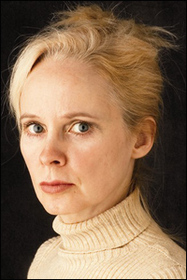We’re delighted to present another post by our awesome FWR editorial intern, Nicole Aber. Enjoy!
Going into the publishing industry now requires a whole new skill set from the days when American classics like East of Eden and The Great Gatsby were released in the early and mid-twentieth century. Now, those interested in the publishing field are faced not only with print media, but also questions of how to keep publishing in pace with the ever-increasing digital world — questions of the utmost importance for those enrolled in a course all about publishing.
Students attending the Columbia Publishing Course this summer are tasked with answering these queries during their six-week graduate program before they’re thrown into the rapidly changing field. For the first time, the course is focusing on electronic publishing. Explains the New York Times:
So the summer session began with a focus on “The Digital Future.” Students were schooled in “Reinventing the Reading Experience: From Print to Digital” by Nicholas Callaway, the chairman of a company that produces book apps for children. Managers from Penguin Group USA explained how to master “e-marketing,” and a panel of digital experts talked about short-form electronic publishing — not quite a magazine article, not quite a book — which is so new, the genre doesn’t really have a name.
According to the article, over the last year, electronic sales outpaced print sales in some books’ first week of release. But despite print mediums’ apparent disappearing act, the Columbia Publishing Course isn’t going away anytime soon. From the New York Times again:
Lindy Hess, the director of the course for 24 years, said she designed it to evolve with the business. “The industry has changed,” Ms. Hess said. “My philosophy is for the course to reflect the industry as it is, so students graduate and they know exactly what’s happening. Students have to learn all the old stuff and get a grasp on the digital world.”
The shift to digital publishing is apparently not scaring off the students either. Instead, they’re incorporating these new dimensions into their course projects, which include conceiving ideas for their own publishing companies. As she reviewed one group’s project, Sarah Crichton, of Farrar, Straus and Giroux’s Sarah Crichton Books, praised the students’ work:
“This is extremely impressive,” Ms. Crichton said, peering around the table. “You’re grappling with a lot of the same things we’re grappling with, which is the impact of e-books. You’re taking it into account and thinking about it, and that’s very impressive and difficult. It’s something that we wrestle with on an hourly basis.”
So perhaps these up-and-coming publishers have what it takes to transform the publishing industry so that it continues to thrive in the digital age. What do you think of the Columbia Publishing Course’s changing model? Do you think it has the potential to shape the future of publishing in a positive way? Or is it just another telling sign that the printed form is on its way out?
Further reading:
- Don’t miss Michael Rudin’s fantastic essay “The Age of Binary Bookmaking.”
- Here on the FWR blog, check out the possible future of e-reading, how one reader learned to love her Kindle, how ebook and print books might co-exist, and much more on digital publishing and e-readers.
- Does all this talk of THE FUTURE have you craving some nostalgia? Take a deep breath and watch this video on how a book was made in 1947.





